WITH TERRRY AND CAROL
KESSEL
IN THE GALILEE
THE AGAMON BIRD SANCTUARY &
A HIKE ALONG THE GUSH HALAV RIVER
NOVEMBER 2004
During the autum migration, millions of birds fly from Europe and
Russia
to the warmer southern hemisphere. The Hula
Valley is an important resting place and even wintering
ground for thousands of birds.
Together with Terry and Carol we joined the hundreds of Israelis who
came to see this wonderful spectacle. Early Friday morning we choose
bicyles
among a range of fun vehicles from Mark at Fun B'Ofan
(050-7700772
/ 04-6904060) and proceeded to cycle around the Agamon, that part of
the
Hula that was reflooded about 10 years ago, and is now a nature
reserve. In addition to birdwatching at the blinds and lookout
points
we stopped to hear fascinating explanations from the bird ringers in
the
field. In the morning we saw over 1,000 pelicans in the lake.

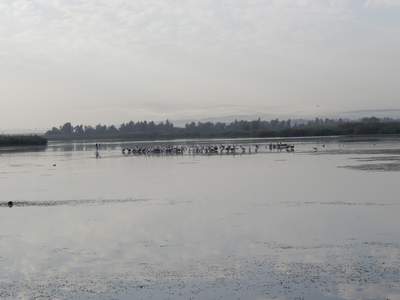
Although we thought that we would be back at our zimmer (B&B) at
Yesod Hama'ala within an hour or two, we stayed much longer and only
the
thought of missing out on a delicious breakfast spurred us to leave the
lake and return to Yesod Hama'ala. Yesod Hama'ala was the first
settlement
to be built in the Hula Valley, in 1883, but the malarial swamps
prevented
further settlement for a further 50 years. The papyrus is an important
plant in the wetlands.
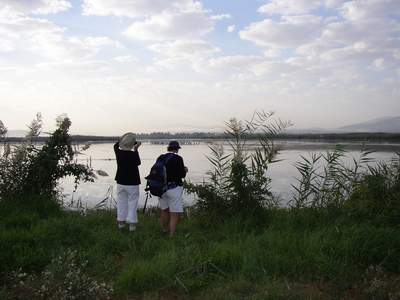
Below Terry is seen riding past one of the open water channels that
help drain the lake and also help keep it wet as necessary, while Carol
and I stop again to look at some birds. The Hula was a malarial swamp
and
many people died of malaria in the pre-State period. With the
introduction
of DDT in 1945, malaria was eradicated. One of the early national
projects
of the young State of Israel was to drain the swamps in the 1950's.
This
was done by digging a series of channels to draw the water
westward and then detonating the 'plug' of volcanic material that
prevented
the water from flowing down to the Sea of Galilee. The hope was that
this
enormous area would result in much fertile agricultural land. The dried
peat proved problematic: underground fires smouldered for months at a
time
and the dried peat would crack and sink. The increase in nitrates from
fertilizers caused algae blooms and other problems in the Sea of
Galilee.
In 1994 the Agamon was created by reflooding part of the Hula. One of
the
best results was the return of many birds.

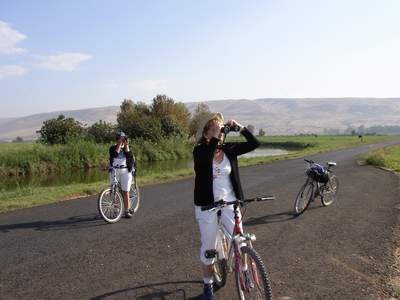 Late afternoon is an enchanting time. The pelicans had moved south but
we saw thousands of Cranes (Agurim) landing in the Agamon for the
night.We
believe we saw all 20,000 cranes that evening, some flying in families
and others in clouds.We also saw many cormorants, flamingos, herons,
egrets,
songbirds,a variety of ducks, water buffalo and water rats (nutriot)
Late afternoon is an enchanting time. The pelicans had moved south but
we saw thousands of Cranes (Agurim) landing in the Agamon for the
night.We
believe we saw all 20,000 cranes that evening, some flying in families
and others in clouds.We also saw many cormorants, flamingos, herons,
egrets,
songbirds,a variety of ducks, water buffalo and water rats (nutriot)
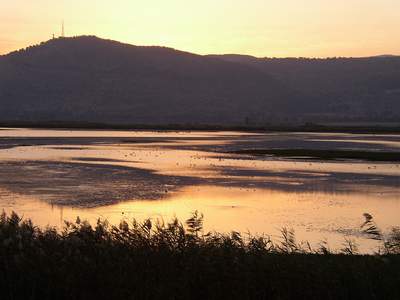
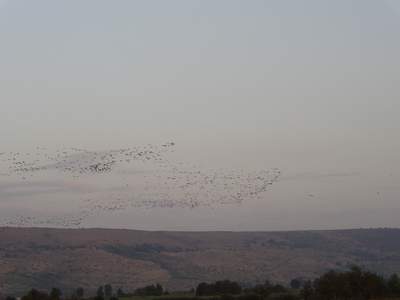
The following morning we went on a hike near the Lebanese border. As
we walked down Nahal Gush Halav we saw many Arab families spreading
plastic
sheets to catch the olives. They will later take the olives to an olive
press. Below Carol, Terry and I discuss the route as we stand in
the dry riverbed of Nahal Dishon.
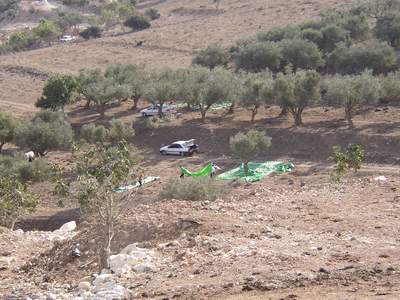
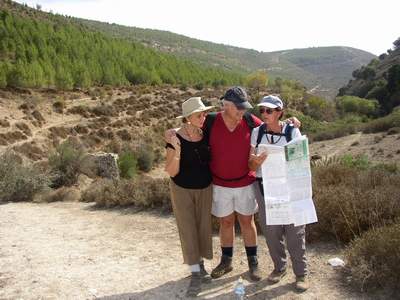
A long haul uphill brought us back to the Christian Arab town of
Jish/Gush
Halav and we were happy to sit for the camera and rest our weary legs.
A great end to a great weekend.

Return to Doreen and Eitan's
home
page.









